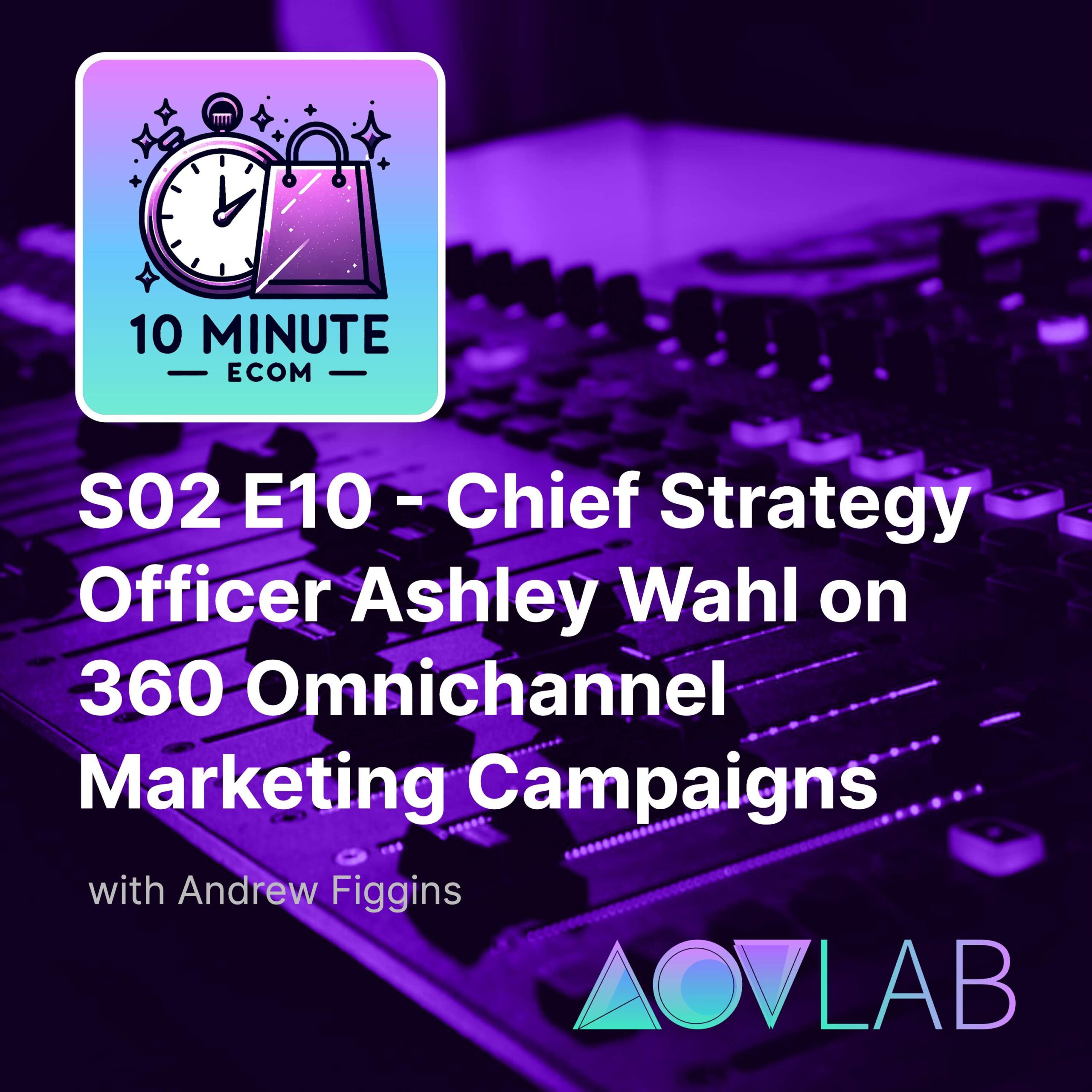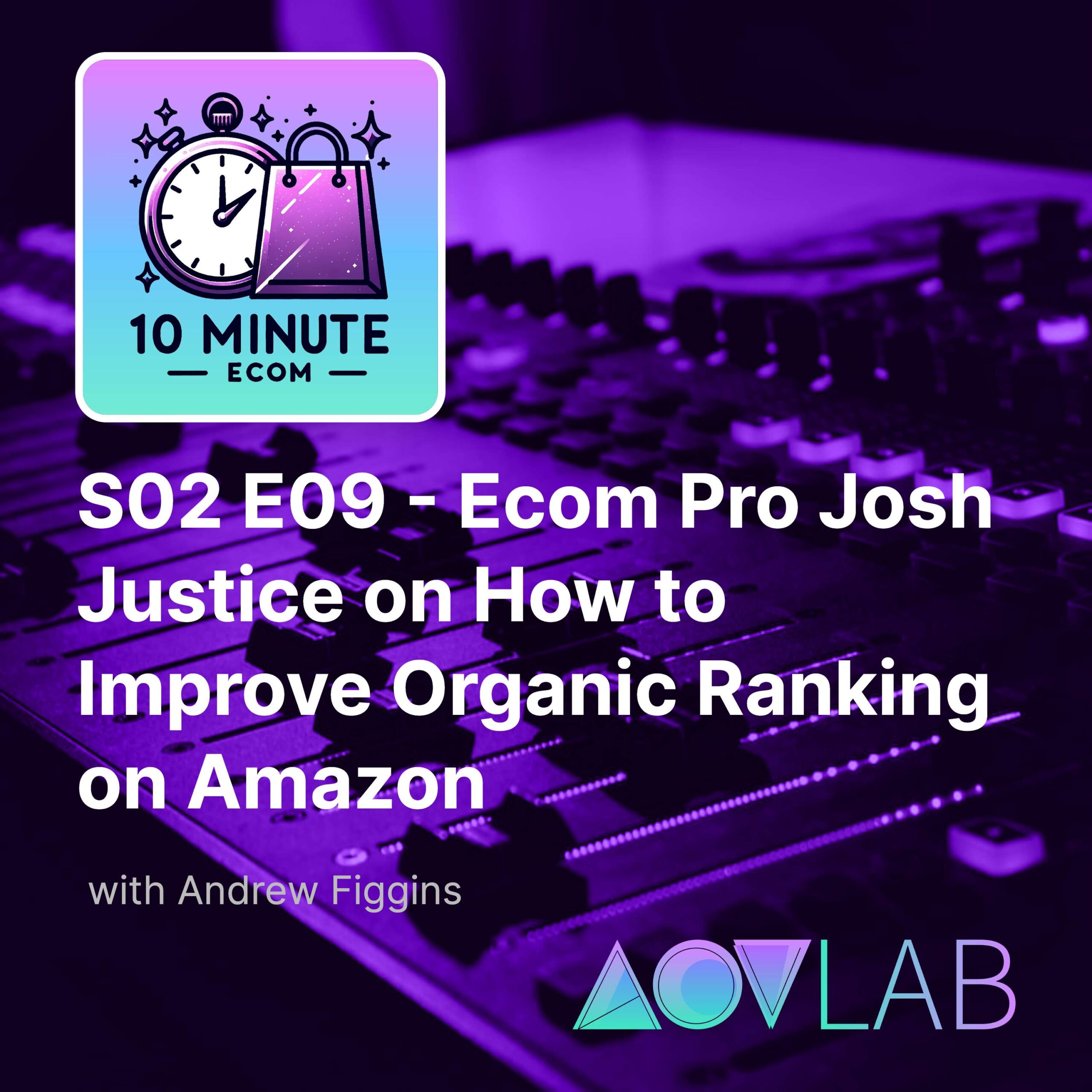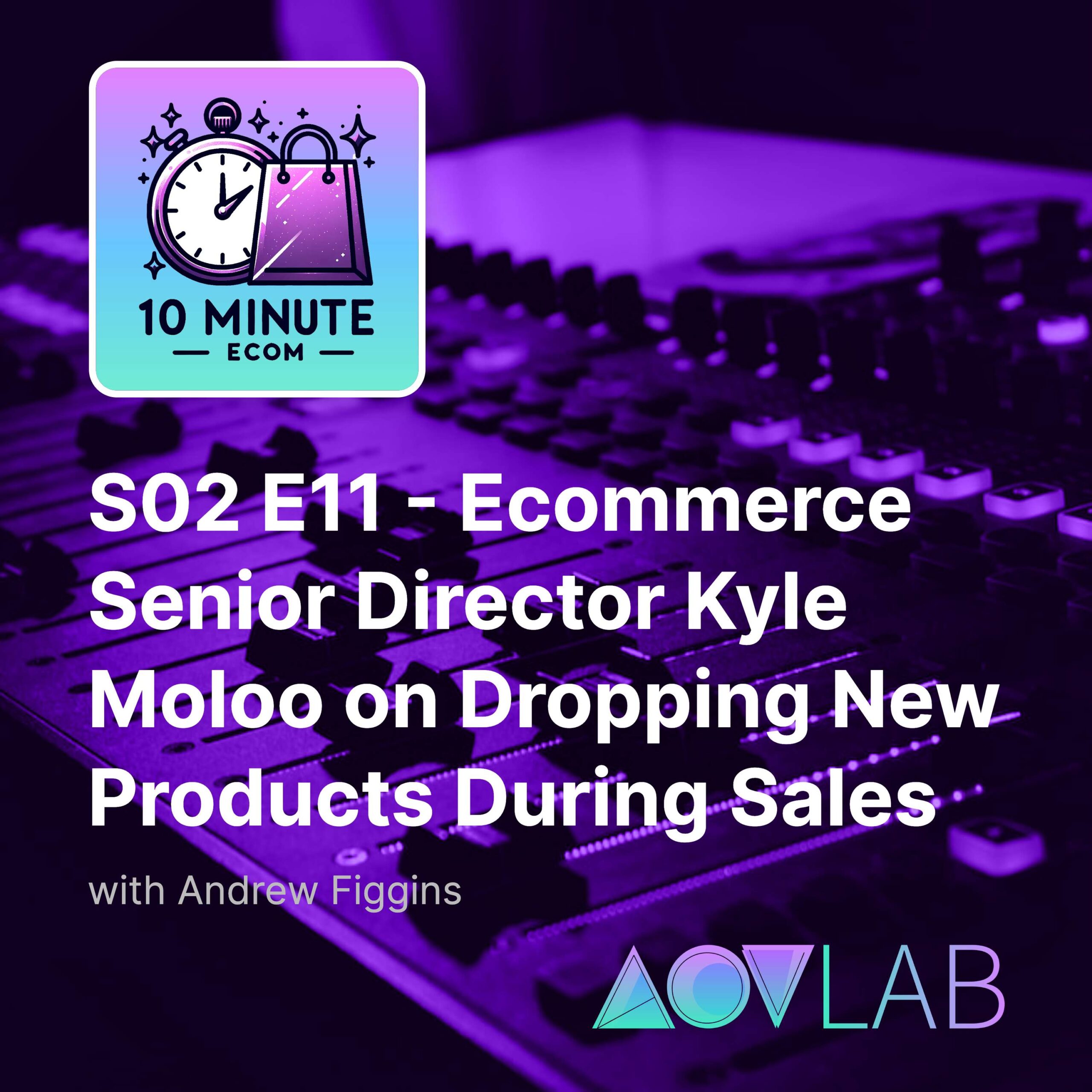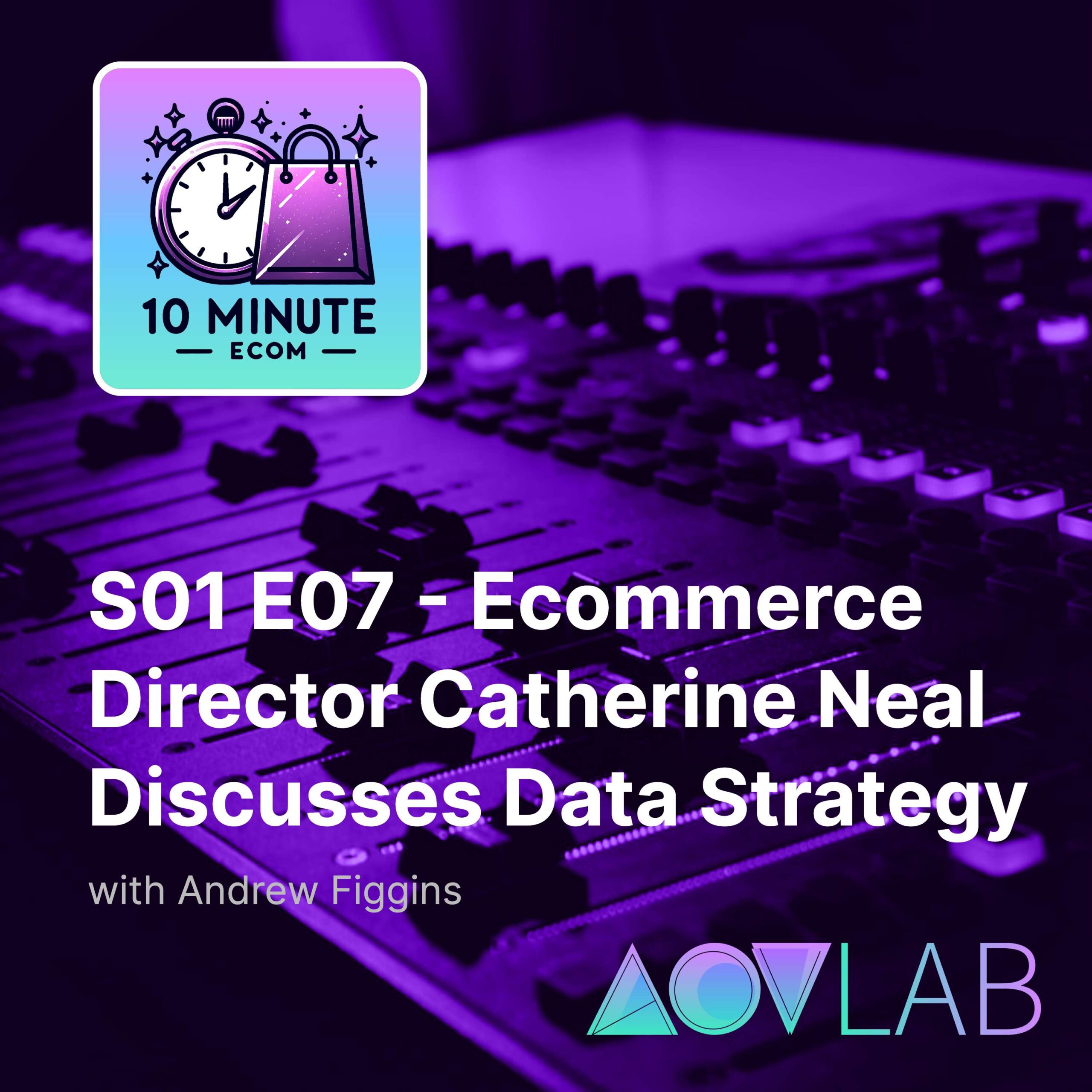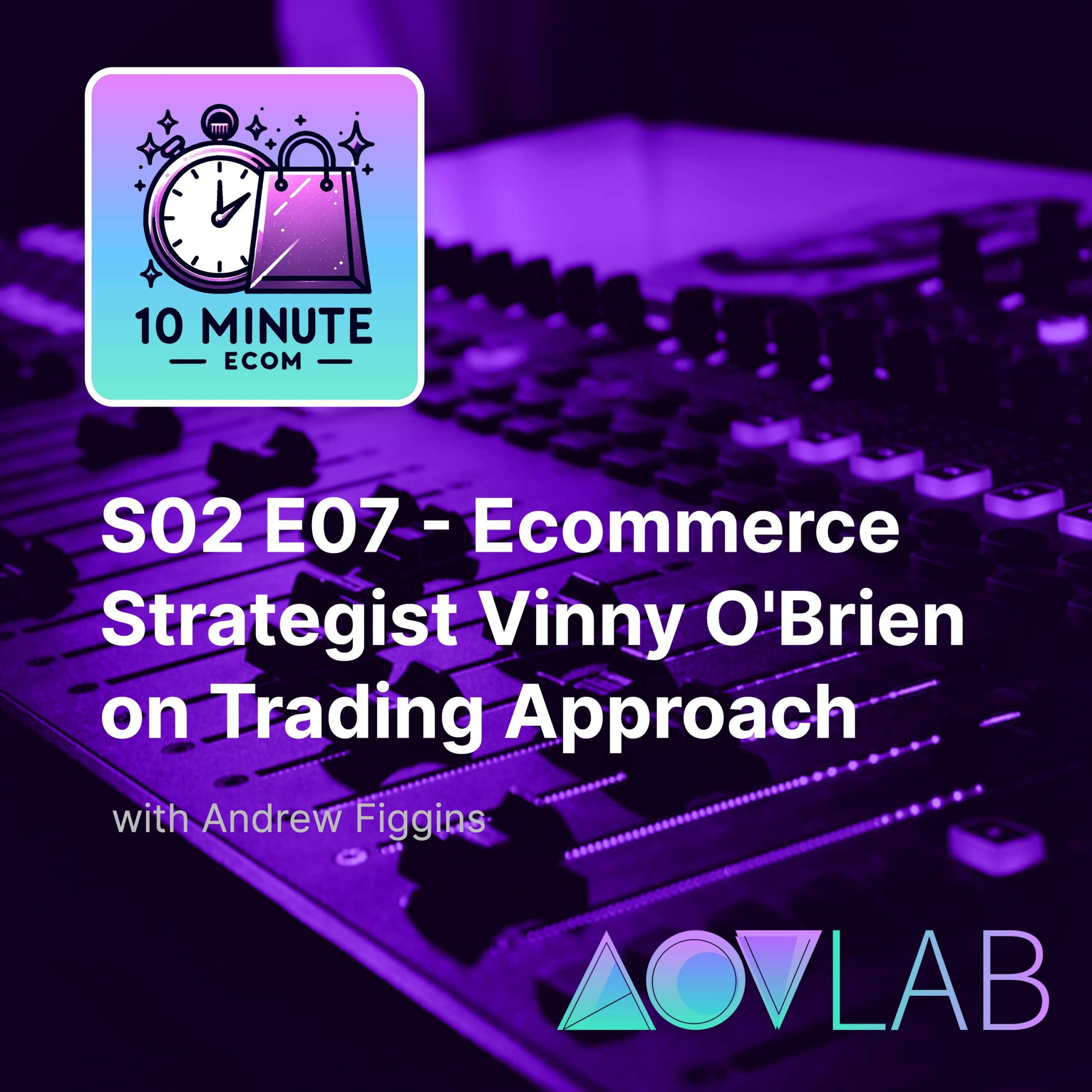View Full Transcript
Episode Transcript
[00:00:07] Speaker A: Hello, ecommerce fans, and welcome to ten minute Ecom and AOV Lab podcast. Every episode we break down a new and different tactic that can help you improve your ecommerce KPIs key performance indicators. I'm your host, Andrew Figgins. I am an ecommerce professional. You may know me as the founder of AOV Lab Web, the former vp of product innovation at Scrubs and beyond, or as the former director of ecommerce technology at Rural King.
Today I'm excited to be talking to Ashley Wall, an e commerce colleague that is doing very interesting work in e commerce and is here today to talk about omnichannel marketing. Anyway, Ashley, what did you come on the show to share today with your ecommerce colleagues?
[00:00:49] Speaker B: Hi, my name is Ashley Wall and I am an ecommerce and omnichannel executive in the greater Philadelphia area. I've spent almost ten years at IkEa overseeing their us ecommerce business, and most recently was chief strategy officer at a company called Media Horizon. And one thing that I've seen that works in ecommerce is a 360 omnichannel campaign.
[00:01:14] Speaker A: Thank you, Ashley. After the ad, we'll get right into the chat.
[00:01:19] Speaker C: Today's episode of ten Minute Ecom is.
[00:01:21] Speaker A: Brought to you by shop AoV Lab. It is a brand new store with fun apparel and gear specifically for ecommerce professional. Just like you and me, we've got high quality embroidered and printed t shirts, hoodies and hats that will spice up any Zoom call or in person meeting with your team. If you lead a team, these products make for awesome gifts to celebrate hitting a conversion rate or average order value milestone. If you work in ecommerce, I think you'll not only find some humor in.
[00:01:52] Speaker C: These products, but also a sense of.
[00:01:54] Speaker A: Pride for what you do every day. Again, the site is shop AOV lab. Head over right now and browse while you listen. Unless you're driving. In that case, pull over. You've got to see and share these.
[00:02:08] Speaker C: Products one last time. The website is shop aov lablab.com.
And now back to the show.
Excellent, Ashley, and welcome to ten minute Ecom today. It's a pleasure to have you here. Just diving right into this topic, what is omnichannel marketing? Can you define that for us?
[00:02:28] Speaker B: Yeah, absolutely. So omnichannel marketing is really creating campaigns that leverage all of your consumer touch points, all of the sales channels. So think of any location where somebody could actually make a purchase of your product and their data. And that is a critical element to this. The data with the objective of creating a cohesive and seamless experience from end to end for the user. And for the purpose of this conversation, I'll speak specifically to how your ecommerce platform plays a key role in achieving that goal. I want you to think of it as the foundation to your brand experience. It has to do a lot of heavy lifting as its own sales channel, but also then to work in partnership with your other sales channels. And then of course, playing the key support role for your entire marketing funnel. All the way from awareness at the top of the funnel down through your retention and loyalty at the bottom of the funnel.
[00:03:25] Speaker C: Yeah, I think retention and loyalty to me always stand out as just the utmost importance in ecommerce.
Realize that at this point in my own ecommerce journey with brands. Ashley, how does your omni channel marketing approach actually work?
[00:03:41] Speaker B: Sure. Yeah. So I guess in order to explain it, I should start with what kind of differentiates it from multi channel, because I think a lot of brands have talked about multichannel over the years and really what in multichannel campaigns are, brands are still leveraging all of the channels that exist and they're creating consistency across them. Where omnichannel, I think deviates from that is that it really puts the customer in the center to create more tailored experiences. So with a 360 omnichannel campaign, you're still leveraging all of your touch points and you're creating consistency across them, but you're also integrating data and insights to create elements that are working synergistically. So it's really less about having the same message across channels and more about making the experience connected and valuable for your consumers. And to do that effectively, you really want to understand the insights of your consumer base. So how are they currently browsing? How are they shopping? What are their specific wants and needs? You can do a lot of that with data and analytics. You can run primary research. There's a lot of valuable resources out there. Just make sure you check your sources to get that type of insight. But you also want to identify your commercial strategy and what that means for the brand. What is it that you're promoting and why? What's that value proposition look like? And then from there you can start to develop these 360 omnicampaigns that really marries all of that data and insight and helps to craft messaging and creative that the commercial offers. It creates those experiences, it helps to bridge your digital and your physical and it really starts to build the base for that loyalty. Looking at a couple examples, and even Marcus is a great one and we actually did a lot of this at Ikea as well. But the use of algorithms and different technologies that help track your customer search behavior on your ecom platform over time, that type of software can then help you generate more relevant recommendations. You can connect geolocation technologies into that and really promote your products to the right customers at the right time. And you can even layer in some inventory into that so that you're connecting your supply chain, your inventory, your sales channels, your marketing to help achieve these improved outcomes. And then on the consumer side, it really looks very seamless. I looked for a purse on Neiman Marcus and they captured that data and then they used it to retarget me when that product was available, close to me, and so that I could just easily make the purchase online or in their physical location. And to me as a consumer, it was quite seamless and it created value for me. So it's really about taking that data that you have access to and then applying it in these tailored campaigns that allow you to really elevate that for your consumers.
[00:06:42] Speaker C: Great, Ashley, thank you for sharing that example. I'm curious, we've talked about the what and the how it works, but I guess going a layer deeper or even to a different layer of this. Why do you think this tactic works? Is this what customers just expect or demand in 2024 from brands?
[00:07:03] Speaker B: I definitely think it is. I think if you look at how consumer behavior has evolved over the years, and the pandemic really helped to be a catalyst in this, there's a much greater focus on convenience and value. Technology is amplified. We have so much data at our fingertips and experiences, they matter. And so 360 omnichannel campaigns allow a marketer to really tap into all of those elements and create campaigns that are more effective. So you're essentially using data to be more present. You can help facilitate better experiences, and it really does help elevate the brand experience for those customers. And I do think that in 2024, you're going to see more brands talking about this. It's already a big topic of conversation, but I think you'll see more consumers start to start to play more of a role in how this is evolving on the brand side of things.
[00:08:00] Speaker C: Absolutely. And it makes a lot of sense, too, I think just from a zero party data or first party data standpoint at this point in time. And I think customers also understand that handshake agreement, that when we're on the website, and like you said, if you're on Neiman Marcus and are browsing an item, you would expect them as a brand to reach back out about that item if you don't complete the purchase. It's part and parcel with ecommerce today. But is there anything from your experience in the past at Ikea or any other topics around what you've mentioned that you'd like to go a little deeper into?
[00:08:37] Speaker B: I think that setting KPIs is important in aligning on what those look like. When we did a lot of these 360 campaigns, that was the first step for us was really getting all the stakeholders together, making sure we were all on the same page with what is the overarching objective and how are we going to measure success.
I personally like to bucket that into kind of three different categories. So I like to look at what it means for our coworkers and the company. I like to look at it also from the customer experience side of things and then what I call business impact. So those are your sales and your profitability style goals. But really when you start to dig into those, what these campaigns can do is it really does help to create a more focused environment for your coworkers. When everybody's working towards the same goals. And the KPIs, it's much more efficient. When you're creating the campaigns on the customer side, you'll benefit from increased satisfaction scores. You'll have a more valuable experience. And we saw that time and time again with when we would run surveys or different research to see how some of these campaigns influenced our consumer base. They were definitely happier when they felt like there was value on their end. And then on the business impact side, there's both short term and long term value for your business. On the short term side of things, you'll see greater campaign and brand reach. It's definitely more efficient with how you're spending your dollars. You'll see higher conversion rates. I've actually seen campaigns that would generate double digit growth when done correctly. And long term, you'll see increased brand loyalty, higher lifetime value. So there's a slew of reasons why I think you would want to explore these types of campaigns. And the other thing is it's a very integrated approach. So even though your primary responsibility might be the website or your digital platforms, it's really critical that you're working with your partners in the selling organization, marketing, fulfillment and inventory and supply chain. There are so many elements that overlap and to have everybody and all of the stakeholders align and work towards that together really does help amplify everything. So it does make a much nicer campaign for the consumer in the long run.
[00:11:02] Speaker C: Definitely. I took a note when you were mentioning that because I think it's so challenging for folks like us in ecommerce because we've got so many kind of balls in the air or plates in the air, it's tough because we're managing the ecommerce organization. We're managing, in many cases, our coworkers and what they're up to or leading them. We've got the customer to think about, of course, and keep at the middle and the center of things. Managing up is a challenge.
Do you have any kind of tricks or tips to just keeping everything organized and being able to manage all those things simultaneously?
How do you do it? Ashley?
[00:11:44] Speaker B: I'm a very structured person, and for me it's about constantly making sure that you're keeping a pulse on what's going on. So if that to you means when you start your day, you want to check your KPIs and you want to look at the performance from the following day or the previous day, if that means just getting the team together regularly and brainstorming and talking through what worked and more importantly, what didn't work. Sometimes I think people shy away from when they make a mistake, but at the end of the day, that's when people are learning and that's what helps you evolve. So I've always been an advocate for really highlighting where things haven't worked and why, so that we can correct them and change course if we need to. I always say fail fast and move forward. Make sure that it's something that you can learn from and you don't replicate. But yeah, I think that just keeping a pulse on everything and understanding how it's influencing those KPIs and making sure that everything always circles back to that is definitely valuable. And then celebrating the win as you go, and especially in digital, I think it's nice because you can see performance quickly. So as you see these tactics that are driving results, celebrate the team and celebrate the work that you're doing and definitely keep that at the forefront of your management and make sure that you're taking the time to congratulate and just acknowledge the work that people are doing. I think sometimes things move at such a fast pace that people can tend to forget some of that, that human element to the management, but it's definitely an important part. And having your team feel like they're part of a bigger group and that they're really making a difference, I think that can make a big difference. The team as well.
[00:13:37] Speaker C: Totally. It's clear that you've had that experience of getting everyone to move in that single direction for a huge challenge. But Ashley, this is ten minute ecom. It's a brief show. Before we head out, I wanted to ask you, is there anything else that you'd like to share today with your colleagues in ecommerce that are happening to be listening?
[00:13:58] Speaker B: Yeah. And I think this might seem, or sound basic. Journey mapping is a great place to start. If this is new to you, it can really help you identify where there's different friction points in the experience and how you can focus different tactics to help optimize your ecommerce platform.
Understanding how your consumers are leveraging your website is one element, but then also partnering with marketing to really deep delve into how they're entering the site, what they're doing when they're there, and also on the brand side, how you want to steer them, where you actually want them to go. Is it easy? Is it intuitive? Does the usability make sense? Are you being commercial with your offer, the inventory to check out? There's so many components where there could be challenges for a consumer. So journey mapping really gives you a good opportunity to identify where those are and then eliminate them as you go. And of course, I'd be remiss if I didn't speak to some newer technologies like AI. I know it's super buzzy right now, but for good reason. It can help you elevate your coworkers to a more strategic place by automating mundane tasks. It can really crunch large data sets in record time, you can generate content and so much more. I will note that it is very dependent on the prompting and finessing some of the outputs to align with your own brand and your objectives. So it does require ongoing management. But I do think it's absolutely worth exploring if it's not something that you've looked into. And yeah, when you look at these 360 omni campaigns, data continues to be king and your customers should really be at the center and the forefront of that. So always keeping that in mind as you start to develop and craft these will help you set up for long term, sustainable, profitable growth. So definitely worth exploring.
[00:15:52] Speaker C: Thanks so much, Ashley, for joining the show today. It was a real pleasure chatting with you and thanks so much for just bringing the knowledge today.
[00:15:59] Speaker B: Absolutely. Thank you so much for inviting me.
[00:16:02] Speaker C: Absolutely cool. That was really quick and efficient.
Ashley, thanks again for coming on the show today. It was a real pleasure chatting with you.
[00:16:12] Speaker B: Thank you so much. It was lovely to meet you.
[00:16:15] Speaker C: Likewise. Well, we have hit that ten minute.
[00:16:18] Speaker A: Mark times too, so that's a wrap.
[00:16:20] Speaker C: For today's episode, I want to again thank our guest Ashley Wall. If you have a moment, be sure.
[00:16:25] Speaker A: To subscribe like or follow the show.
[00:16:27] Speaker C: On Apple Podcasts, Spotify, Amazon Music, Google.
[00:16:32] Speaker A: Podcasts, or wherever it is that you listen.
As mentioned earlier on the episode, please head on over to shop Aovlab.com, our brand new store that helps to support this podcast. It is launching with nearly 100 products, so plenty to choose from. Our top seller so far is a shirt that simply says Ecom on it. I wear it around my extended family so I can point to it when my relatives ask me what I do.
I hope you enjoyed this episode of the show. Until next time, this is Andrew Figgins signing off and saying have a good one.
